A New England schoolmaster takes a job in New York and soon falls in love with the local beauty. But will his romance be ruined by the mysterious Headless Horseman said to haunt the area? Will Rogers stars as Ichabod Crane, the awkward schoolmaster who has a run-in with a headless Hessian.
Home Media Availability: Released on DVD.
I’m also reviewing other versions of the film! Click here to skip to the talkie.
Trying to get ahead
The Legend of Sleepy Hollow is an important piece of American folklore and literature and for good reason: the image of a schoolmaster quaking in the presence of a mounted soldier missing his cranium is irresistible. The book has been adapted to the motion picture screen multiple times but recent versions have been less than faithful.

Today, we’re going to be looking at three screen versions that follow the text pretty closely, with varying degrees of cinematic success.
Because the original story is two-hundred years old this year, I am not going to be particularly worried about spoilers. The basics: Ichabod Crane is a Yankee schoolmaster teaching in among the Dutch of New York. He has his heart set on Katrina van Tassel, the local beauty. Or, more specifically, her father’s handsome fortune. His romantic rival is local strongman Brom Bones. One night, the superstitious schoolmaster finds himself pursued by the Headless Horseman, the ghost of a decapitated Hessian, and he disappears. But was the horseman just Brom Bones all along? Author Washington Irving allows this to remain ambiguous.

(By the way, a Hessian was a German mercenary in the employ of the English. As the American Revolution was as far away from Washington Irving’s day as the Vietnam War is from ours, such war stories would be fresh in the minds of his characters and his audience.)
In the early 1920s, one of the most influential and popular entertainers was Will Rogers, a Cherokee citizen who graduated from vaudeville rope tricks to aw-shucks political commentary and homespun humor. Rogers had made the jump to cinema and was an experienced film star when he was called upon to play Ichabod Crane. The fact that his stage appearances commanded ticked prices of up to ten dollars was a significant part of the picture’s advertising campaign. (That’s about $155 in modern lettuce.)

While the story begins with Ichabod Crane already in residence, the film backs up a bit and shows his arrival in Tarrytown. We see him reading a book about witchcraft, establishing his superstitious nature, and the love triangle is quickly established as Katrina (Lois Meredith) flirts and Brom Bones (Ben Hendricks Jr.) fumes. There are several bits of business directly lifted from the short story as Crane holds a child in one arm and rocks a cradle with his foot in order to ingratiate himself with the local housewives.

And here is also where we run into a problem. The Legend of Sleepy Hollow is not a thick story by any means and much of its length is taken up with the thoughts and plans of Ichabod Crane. Actual events? A bit thin on the ground. The film attempts to pad things out by adding a scene in which Crane is threatened with tarring and feathering for his interest in the supernatural but this doesn’t really work as the film had worked hard to establish Tarrytown as a hotbed of ghost stories with all the residents obsessed with the Headless Horseman. Why would Crane’s interest be viewed as unique. (And it is established in the story that it was one of the more normal aspects of the character in the eyes of his Dutch neighbors and hosts.)

By the way, I have seen some reviews question why Crane is described as a “Yankee” because the term is most closely associated with its use as a mild insult to anyone who originated north of the Mason-Dixon line. But you see, Yankee can also mean all Americans in foreign parts and in the North, it can refer to a resident of New England, which Connecticut-born Crane certainly was.
Things continue apace in the film until the night of the fateful party and Crane’s run-in with the Headless Horseman as he rides home at night. Crane’s borrowed steed, Gunpowder, is no match for the black horse of the Hessian. The chase is exciting enough, if a bit sloppy. A member of the crew wanders into the shot for a split second and the scene is not really lit all that well.
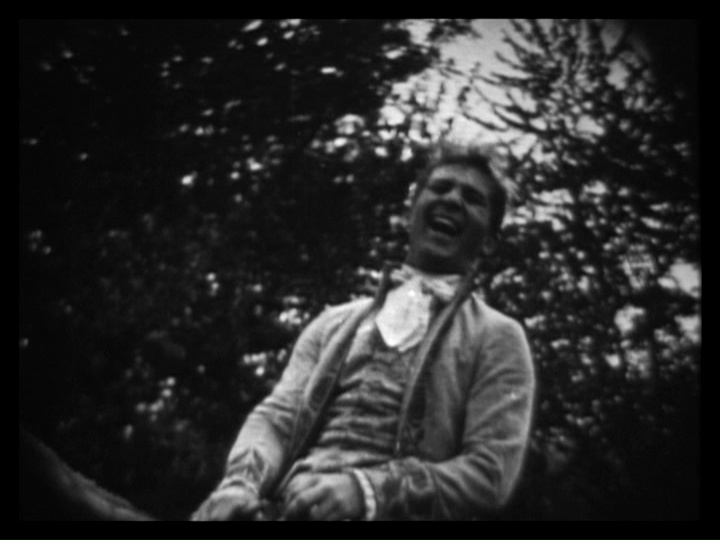
The worst of it is that the Headless Horseman, after he drives off Crane, takes off his mask and reveals himself as Brom Bones. Boo!
Lately, the fad has been for the Headless Horseman to be unambiguously supernatural but I don’t think that’s the way forward either.
In my opinion, though, insisting that the mysterious horseman was either wholly earthly and mundane or wholly supernatural is missing the entire theme of the tale. With his playfully ambiguous ending, Irving is showing us a folktale in the making and the fact that so many modern interpretations take the story of the decapitated horseman as literally as Ichabod did rather proves his point. (Sips tea, gives newer adaptations the side eye.)

Irving wrote that there were rumors that Crane escaped to New York, eventually married money and prospered while the Dutch wives whispered that he had been carried off by the Headless Horseman. It’s playful and fun and there is an opening for a third interpretation: Crane was murdered.
The showpiece of many adaptations in the sequence in which the Headless Horseman throws his jack o’ lantern head at Crane. It’s murkily shot in this version but stay with me here. A pumpkin the size of a human head cannot possibly weigh less than ten pounds and if hurled with enough force (by, say, the strapping Brom Bones), it could conceivably strike a fatal blow. So, we cannot rule out the idea that by accident or design, Brom killed Ichabod Crane, hid the body and went about his business.

Other suspects have been brought up over the years but Brom remains the favorite simply because he had means and motive (he didn’t know Katrina had turned down Crane, remember). Hans von Ripper, Ichabod’s host at the time of the Headless Horseman incident, has also been listed as a suspect. He lent Crane the horse he was riding and the fine saddle came off in the chase and was trampled.
But if Hans van Ripper was the robber and killer, why would he trample his own Sunday saddle? And scare his own horse half to death? Gunpowder was not young but he was still fit for riding and it seems to me that there would be easier ways to murder and rob the schoolmaster that did not include damaging Ripper’s own property. By Irving’s own description, Crane’s pay was not exactly lavish and his board was provided in lieu of cash so it’s possible that the cost of the saddle would have zeroed out the profit.
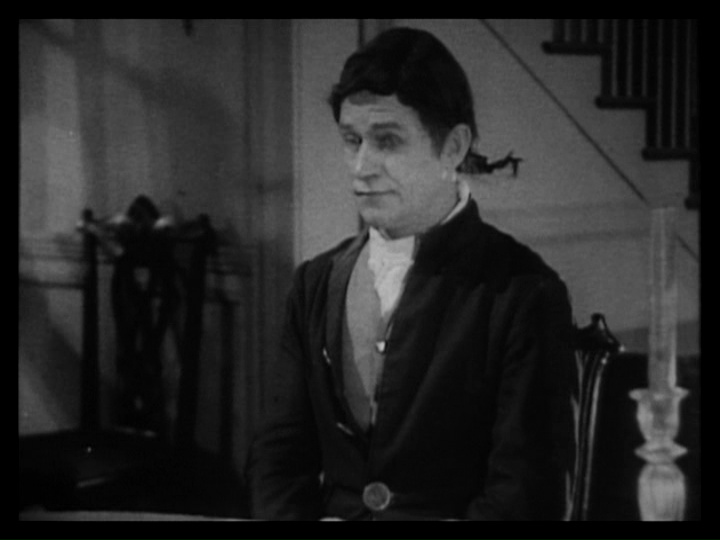
And, of course, it might actually be true that Crane scampered away and found prosperity in the larger urban centers of New York. But we’ll never know, so let’s savor the ambiguity. That’s more than we can say about this picture.
I will say that I enjoyed the authentic locations and the picturesque costumes in the film but it has more issues than just the chase fizzling. As stated before, the story would be a bit thin to support a short but a seven-reel feature? Yipes, that’s slow going. In fact, prior to writing this review, I had tried to sit through the picture several times and never quite made it. I pretty much only survived this time because the edition I viewed had a quality score by Ben Model. (Always get the best score you can afford, friends.)
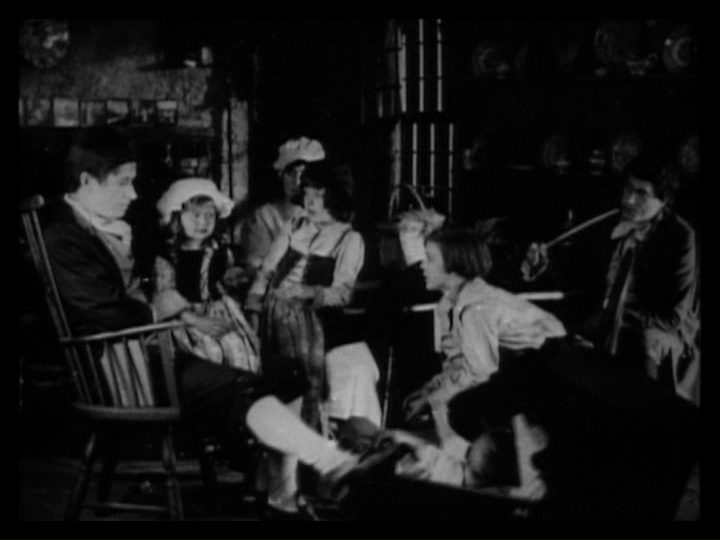
Another problem is Ichabod. Specifically, Will Rogers as Ichabod. Your see, The Legend of Sleepy Hollow is pretty low on sympathetic characters. Katrina is a coquette who enjoys setting men against one another. Brom Bones is a bully with a violent streak. And Ichabod Crane is a grasping creature who has spent Katrina’s fortune in her mind before her parents are anywhere near dead.
And the issue is that Will Rogers had natural screen charisma and the filmmakers seemed hesitant to mess with that by making Ichabod Crane the louse he was in the book. But they also don’t exactly make him likable either. So, we’re kind of stuck with this wishy-washy interpretation that doesn’t support the text of the story but not much new material is introduced to compensate. So while the screenplay is rather faithful to the source material, it misses a couple of key points that happen to be the reasons for the stories longevity.
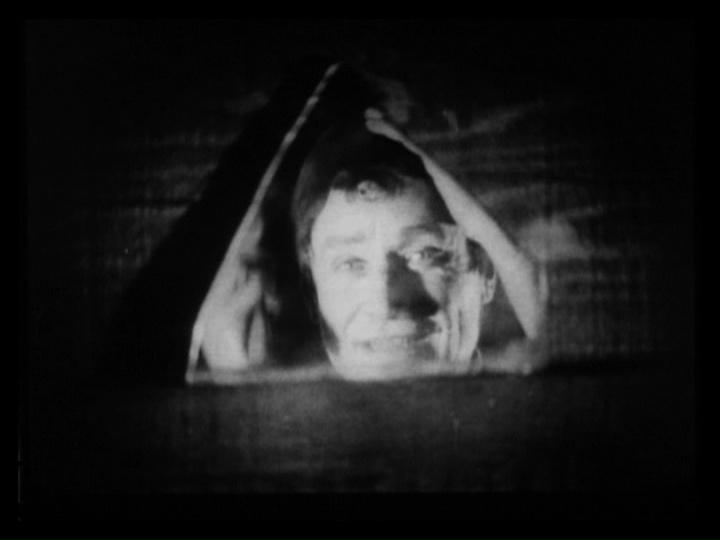
As for the rest of the cast, well, they weren’t exactly household names in the silent era and this picture isn’t doing much to prove they should be household names today. As stated before, the film generally looks good, if nondescript, but it lacks any kind of spark or mark of distinction other than the presence of Rogers.
The picture isn’t exactly bad and it’s not exactly good but it’s three reels of story in a seven-reel bag and the stretch marks show. Further, the hesitation to make Rogers unsympathetic ruins the tone of the story and makes everything feel namby-pamby. The film has a generally sloppy and primitive feel to it and the miscasting doesn’t help matters one bit.

This film is probably best for Rogers completists and anyone interested in Washington Irving adaptations but it doesn’t exactly showcase the best of the silent era.
Where can I see it?
There are many public domain editions of this film but I recommend the ReelclassicDVD release because it comes with a piano score by Ben Model. This is a movie that absolutely requires good music and a professional score helps considerably.
Silents vs. Talkies
The Headless Horseman (1922)
vs
The Headless Horseman (1934)
vs
The Adventures of Ichabod and Mr. Toad (1949)
We have a three-way race in the Silents vs. Talkies contest! First, an eight minute animated short and then a Disney classic before we compare all the films and decide which version is the best decapitated horse jockey picture.
The Headless Horseman (1934)

We’re going to start with a split-reel Cinecolor picture by Ub Iwerks, who had quit Disney’s animation house to strike out on his own. It’s the shortest version by far but, as we have established, that’s not really a mark against it. The cartoon quickly establishes the rivalry between Ichabod and Brom for the hand of Katrina and the fact that the schoolmaster is a superstitious fellow who fantasizes about the Headless Horseman.

The film actually does count as a silent with synchronized sound effects because there is no spoken dialogue. The familiar story plays out entirely through the gestures and animated antics of the characters and the picture generally does a good job of getting the point across with crisp efficiency.
Alas, this film is filled with racial stereotypes that are… well, see for yourself.

(And because I invariably get a response that is some form of “Look at context, nobody was offended back then!” I recommend reading Returning the Gaze: A Genealogy of Black Film Criticism, 1909–1949 by Anna Everett. It contains a wealth of information on how critics, columnists and intellectuals viewed racist stereotypes and what they did to combat them. But the long and the short of it is that, yes, people were offended, did complain and wrote extensively about the damage done by these stereotypes.)
The chase of the Headless Horseman is exciting but it could have stood to be a little longer. And before anyone says that it was an eight-minute cartoon, well, it had plenty of time for tedious stereotypes so I think my demand for a bit more of the title character instead is reasonable.
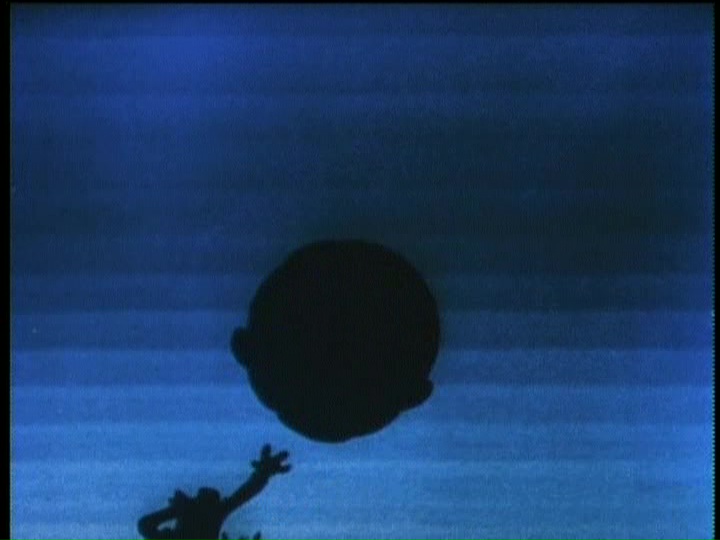
And there is at least one stunning shot in the picture: the horseman removing his pumpkin head and hurling it directly at the audience. It’s pretty exciting stuff and very much in the Iwerks style. (See The Skeleton Dance of 1929.) Unfortunately, I was hoping for a better use of color as the silhouette of the pumpkin is not quite as thrilling as, say, a flaming jack o’ lantern. (Knowing wink.)

The chase ends with Brom Bones unmasking himself as the Headless Horseman, which was a disappointment. Then, during the wedding of Brom and Katrina, a headless figure enters the church and stands beside them. If the cartoon had ended there, I would have given it top marks. Alas, the figure unmasks himself and is revealed to be Ichabod. Yawn.
Availability: Included with the 1922 film on the ReelClassicDVD release.
The Adventures of Ichabod and Mr. Toad (1949)

In the late 1940s, the Disney company had some cartoons that weren’t feature length but also were too long to be shorts, so the idea of combining an adaptation of The Wind in the Willows with The Legend of Sleepy Hollow emerged. The Wind in the Willows is a good adaptation of the book but it’s not the topic at hand. But just because we’re skipping it here doesn’t mean you should skip it when you watch the film.
The Legend of Sleepy Hollow makes up the second half of the picture and is narrated by Bing Crosby. I had this film as a kid but I must confess that I always stopped the tape before this section began because the Headless Horseman scared me. I hadn’t seen it in decades before I decided to write this review, so it will be a new experience for me as well.
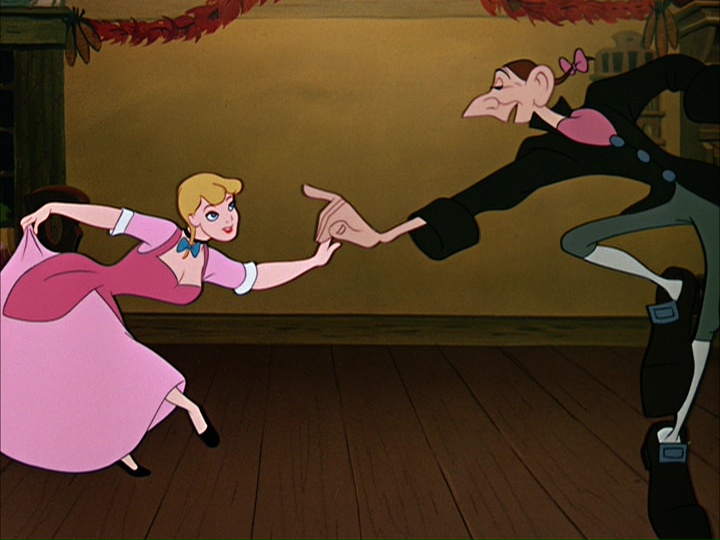
By the way, covering a Disney film is always a little tedious because, frankly, everything the studio puts out has been discussed to death and if you are ever curious about how cults form, say something mildly critical of the studio and you will find grown men sobbing over your mentions and demanding that you be kind to the poor little multi-billion dollar corporation. It would be amusing if it wasn’t so monotonous. The ain’t gonna be a habit, in short.
So, we’re mostly going to focus on the adaptation quality of the Ichabod portion of this picture and try our best to perform an apples to apples comparison with the other two Sleepy Hollows.

This Tarrytown is a swinging place, literally as the cartoon has a swing music score. Well, if you’re going to hire Bing Crosby, you may as well take full advantage of his talents… Ichabod is just as grasping, Katrina is just as coquettish and Brom Bones, while slightly more sympathetic than in the story, is still a bit of a bully frustrated that he cannot just smash the schoolmaster.
The animation is lovely and fluid, of course, and the characters look the very picture of what Washington Irving described. Best of all, the approximately half-hour length proves to be the perfect amount of time to tell the story of the Headless Horseman.
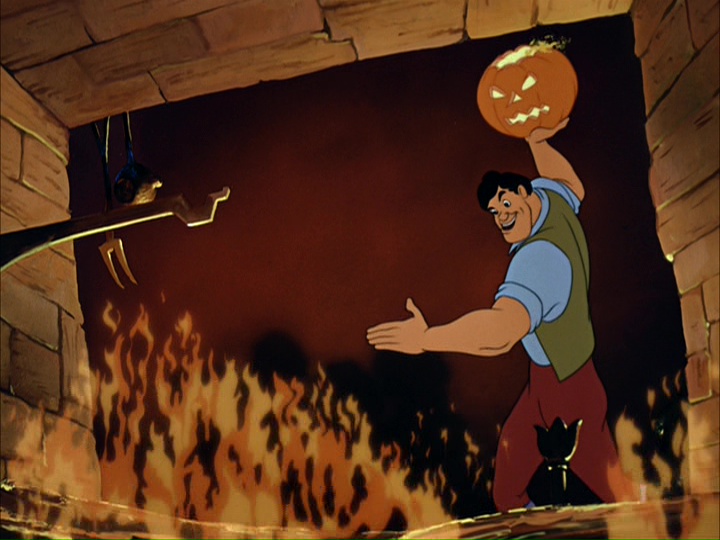
The picture doesn’t have the furious pace of the 1934 cartoon but it uses its time wisely, carefully establishing Crane’s superstitious nature and establishing the Headless Horseman as a local ghoul. There is also a very nice sequence after Crane has departed for home but before he meets the Horseman when he sees murder and terror in every shadow. The multiple fake-outs lull both Crane and the audience into a false sense of security before the Horseman arrives.

And does he ever arrive! He’s scary, he’s stylish, he’s relentless and the solid three-minute chase scene is a non-stop thrill with a bit of humor thrown in for good measure. I honestly cannot think of anything that could have improved on it, it’s just magnificent.
Ub Iwerks had been once again working under Disney for about a decade that this point and the 1949 picture reuses a couple of elements from his 1934 cartoon. As he prepares for Katrina’s party, the schoolmaster makes use of chalk dust from his classroom to powder his face. And, oh yeah, that flaming pumpkin head… It’s in color now. Nice!

And the winner is…
The Adventures of Ichabod and Mr. Toad
All three pictures stay close to the source material but only one can be the winner! Remember earlier when I said that ambiguity was the secret of the original story’s success? Well, there is only one picture out of these three that had writers that understood that fact and, you guessed it, it’s The Adventures of Ichabod and Mr. Toad.

While the picture gives us all the information we need to name Brom Bones as the culprit, there is no unmasking scene and nothing to absolutely confirm that he was the Headless Horseman. Like the story, the film suggests that Ichabod hightailed it and then married money but given the merging of fantasy and reality throughout the picture, the scene of Ichabod enjoying a feast with his family cannot be taken as absolute proof of his survival.
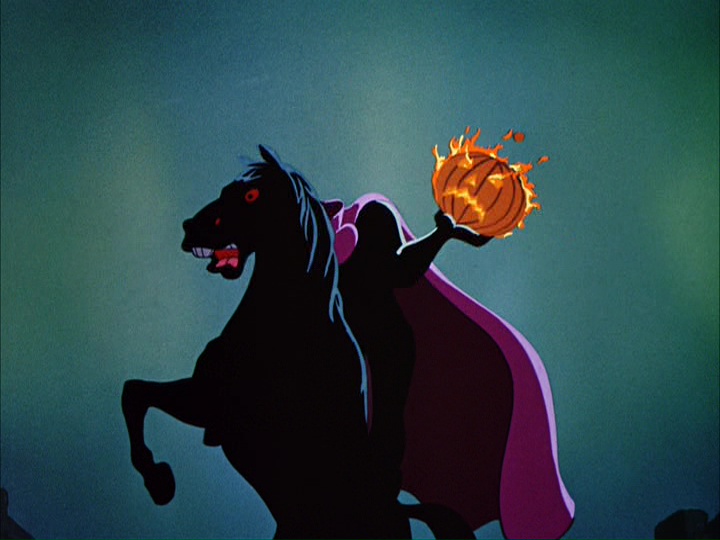
The final decision to pair The Legend of Sleepy Hollow with The Wind in the Willows rather than keeping it solo and stretching it to feature length proved to be a wise one. This Ichabod suffers none of the pacing issues of the Will Rogers version and none of the unpleasant elements of the Iwerks cartoon. (Not that Disney was blameless during this period, it just managed not to be racist in this specific film.)
The Headless Horseman animation looks fabulous and it’s easy to see why it scared me so much as a child. Nowadays, I can just admire the animator’s craft, beautiful use of color and imaginative blocking. But kid me? Yeah, don’t let her anywhere near this.
Availability: Released on DVD and Bluray.
☙❦❧
Like what you’re reading? Please consider sponsoring me on Patreon. All patrons will get early previews of upcoming features, exclusive polls and other goodies.
Disclosure: Some links included in this post may be affiliate links to products sold by Amazon and as an Amazon Associate I earn from qualifying purchases.

Fascinating! I’d never even heard of the non-Disney versions of this story until I read your blog. I’ve always enjoyed Disney’s adaptation, though, and your account hasn’t given me any reason to think otherwise.
Yes, there was a Vitagraph version as well in 1908 but I couldn’t find a copy anywhere and fear it’s probably lost.
I have seen this film, one of the worst prints of any silent I have ever seen. If there is a clearer less faded/murky version around I wlll give it another go.
I do hope better material exists out there.
Great reviews! I need to see The Adventures of Ichabod and Mr. Toad. I’ve unfortunately seen pieces, but yeah, that ending with the Headless Horseman definitely creeps me out. I’m wondering if its cheating a little bit, but I remember a part of the chase where Ichabod accidentally lands on the Horseman’s steed and sees down into his body, getting freaked even more. Would that imply that he didn’t see anything down there? Who knows. I am curious to see your thoughts on The Wind in the Willows side of the film, especially because its narrated by Basil Rathbone and he’s one of my favorite actors. Keep up the great work! 🙂
I’ve always liked the Wind in the Willows half.
Well, assuming that it was Brom Bones, all Ichabod would have seen would have been sweaty hair, which would not have done much to reassure him given his overactive imagination. And if it wasn’t Brom Bones…
Good point!